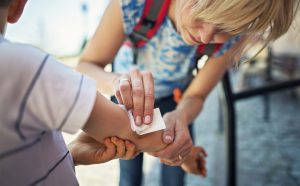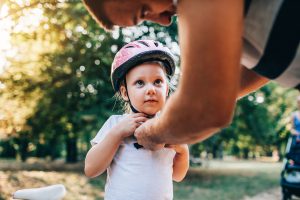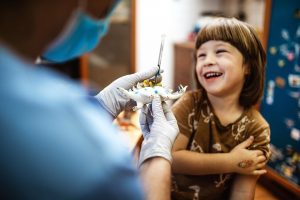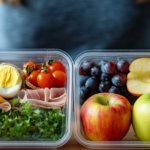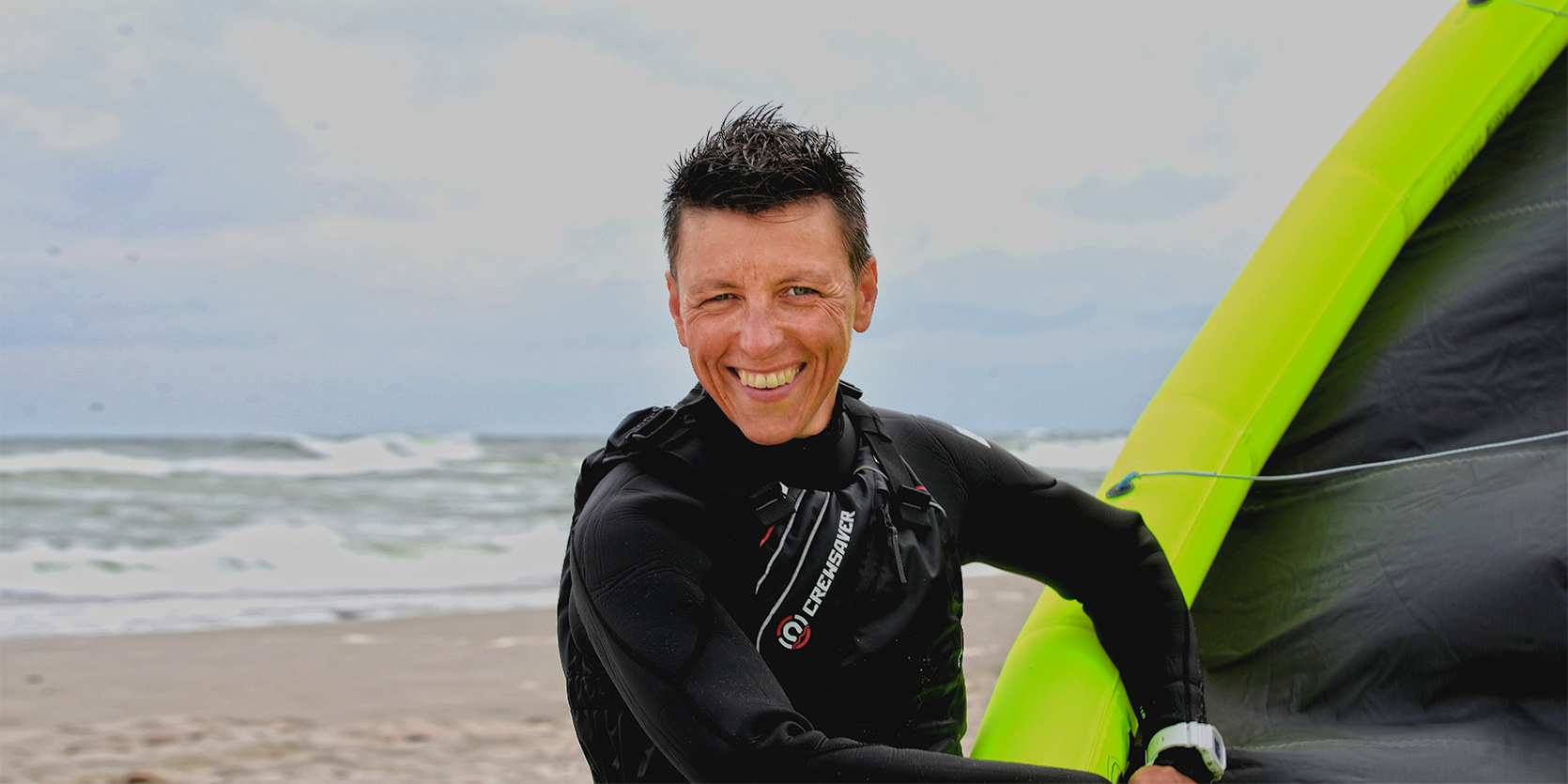
„Wtórne utonięcie to mit. Ale woda niesie inne, poważne zagrożenia dla życia” – rozmowa z Ane Piżl, ratownicą medyczną i edukatorką
Anna Sierant: Od co najmniej kilku lat w każde wakacje wiele portali powtarza pełne grozy informacje o tzw. suchym lub wtórnym utonięciu. Tymczasem okazuje się, że… coś takiego nie istnieje?
Ane Piżl: To prawda. Od bardzo wielu lat media straszą rodziców „wtórnym utonięciem”, a my – ratownicy, medycy – mówimy: „nie ma takiego ryzyka”. Nikt nie utopi się we własnym łóżku, tydzień po zachłyśnięciu wodą, bez żadnych poprzedzających objawów. To mit. I tą odpowiedzią nie chcę zbagatelizować tematu wody i utonięć. Wręcz przeciwnie. Chcę, żeby media rzetelnie edukowały o tym, co jest realnym zagrożeniem, zamiast straszyć mitami. A jest o czym mówić, bo co roku część osób nie wraca z wakacji. Toną, bo nie mają dostatecznych umiejętności pływackich, nie wiedzą, że przy falochronach morze jest głębsze, że przykosa w rzece kończy się głębią, nie potrafią się zachować w prądzie wstecznym, pływają po alkoholu, jadą na zagraniczne wakacje, nie wiedząc nic o pływach i prądach, przeceniają swoje umiejętności, nie zapinają kamizelek asekuracyjnych. Co roku umierają też ludzie, bo osoby nad wodą nie mają pojęcia o pierwszej pomocy albo skaczą do wody, żeby komuś pomóc, bez elementarnej wiedzy o ratownictwie.
W całej narracji związanej z tzw. suchym utonięciem największy strach wśród rodziców budzi chyba mit, który głosi, że miałoby ono nastąpić nagle, bez żadnych objawów, po kilku dniach od momentu, gdy dziecko tonęło i zakończyć się niemal pewną śmiercią. Co rzeczywiście może grozić osobie, która zachłysnęła się wodą, w przypadku której doszło do podtopienia?
Osoba, która tonie, aspiruje do dróg oddechowych niewielką ilość wody – zwykle mniej niż 2 ml na kilogram masy ciała, czyli u przeciętnego pięciolatka będzie to mniej niż 40 ml. Dlaczego tylko tyle? W czasie tonięcia dochodzi do skurczu krtani, więc nasze płuca nie napełniają się wodą jak wiadro, które wpadło do wody. Toniemy z braku tlenu, a nie z powodu nadmiaru wody w płucach. Co więcej, płynu, który dostał się do dróg oddechowych, nie trzeba w żaden sposób „wylewać” ani „wypompowywać” – to również mity.
Może być jednak tak, że u osoby, która przeżyła epizod tonięcia, rozwiną się zaburzenia oddychania i zagrażający życiu obrzęk płuc. Objawy pojawią się najczęściej niemal od razu po wyjęciu z wody i nasilą w ciągu kilku godzin. Będzie to uporczywy kaszel, duszność, charczący oddech, sina lub blada skóra, zasinienie ust, odkrztuszanie pienistej wydzieliny, niepokój, uruchomienie dodatkowych mięśni oddechowych (zdejmij koszulkę dziecka i patrz na klatkę piersiową, jak oddycha). Może dojść do zaburzeń przytomności. Nie muszą wystąpić wszystkie te objawy, ale na pewno – jeśli dojdzie do poważnych powikłań tonięcia – pojawi się część z nich. I to jest powód, żeby natychmiast zadzwonić na 112. Jeśli sam incydent wyglądał dramatycznie, dziecko długo było pod wodą, realnie walczyło o życie, to również powinno się znaleźć pod obserwacją.
Natomiast medycznie nie istnieje opcja, by dziecko po zakrztuszeniu się wodą funkcjonowało idealnie zdrowe przez tydzień, a następnie zmarło na skutek utonięcia. Z rzetelnych, naukowych publikacji wynika, że jeśli dziecko bezpośrednio po zachłyśnięciu się wodą nie ma żadnych niepokojących objawów, a pierwsze z nich pojawiają się dopiero ponad 8 godzin od kąpieli, to zdecydowanie należy reagować, ale szukać innej diagnozy. Może to być na przykład uraz głowy, którego dziecko doznało w czasie zabawy lub rozwijające się zapalenie płuc.
Jak często występują realne powikłania tonięcia?
Rzadko. Przeważająca większość osób wyjętych z wody nie ma żadnych niepokojących objawów. W prestiżowym piśmie medycznym „Chest Journal” opublikowano analizę przypadków tonięcia, opisywanych przez 19 lat w rejonie Rio de Janeiro. Zbadano w niej osoby poddane dalszemu leczeniu w Near-Drowning Recuperation Center. W grupie osób, u których jedynym objawem po tonięciu był kaszel, nie odnotowano żadnego śmiertelnego przypadku. Ale oczywiście ta pozytywna statystyka nie ma uśpić naszej czujności, tylko rozbudzić ją, gdyby pojawiły się konkretne objawy i zaburzenia oddychania. Bo u 5,2 proc. leczonych tonących rozwinął się ostry obrzęk płuc. Warto jednak zauważyć, że zdecydowanie większe żniwo zbiera zatrzymanie krążenia w czasie tonięcia i to jest największe zagrożenie. Z grupy osób, u których – w tej analizie – doszło do zatrzymania krążenia, zmarło 93 proc., a udało się odratować zaledwie 7 proc. tonących. Dlatego polecam wszystkim trenować resuscytację i dobrze wybierać miejsca do wypoczynku nad wodą.
Co zrobić, gdy zaobserwujemy te niepokojące objawy? Próbować radzić sobie w domu, zapisać się na wizytę w przychodni czy od razu dzwonić na pogotowie?
Dzwonić na 112. Obrzęk płuc jest stanem zagrożenia życia. Nie ma na co czekać. Oczywiście objawy, które zaobserwujesz w domu, nie świadczą jednoznacznie o obrzęku płuc, ale lepiej 10 razy zareagować niepotrzebnie, niż raz nie zareagować. Mówimy o życiu.
Na czym powinna polegać odpowiednia obserwacja, uważność na dziecko w czasie pobytu nad wodą? Jak ważne jest to, by któreś z rodziców umiało pływać?
Do wypoczynku nad wodą warto wybierać strzeżone kąpieliska. Chyba że świetnie pływasz, znasz się na wodzie i masz ze sobą podstawowy sprzęt asekuracyjny (np. bojkę, rzutkę lub kamizelkę). Będąc w grupie dorosłych z dziećmi, warto ustalić, kto konkretnie patrzy na dzieci i przekazywać sobie tę rolę – osoba, która obserwuje dzieci, nie patrzy w telefon, nie odwraca się, nie odchodzi, nie pije alkoholu. Warto pamiętać, że ukształtowanie dna może zmienić się w ciągu nocy, więc miejsce, które było wczoraj bezpieczne, dziś już takie nie jest. Jeżeli planujesz pozwolić dzieciom bawić się w jakimś miejscu w wodzie, najpierw sam/sama tam wejdź i zobacz, czy np. na dnie nie ma rozbitej butelki albo, czy prąd nie wymył piasku i nie pogłębił dna. Nigdy nie pozwalaj bawić się dzieciom przy falochronach. Sprawdź numery alarmowe do ratownictwa wodnego – w Polsce zawsze możesz zadzwonić na 985, 601 100 100 lub 112, ale jadąc na wyjazd zagraniczny, ustal odpowiedni numer i wpisz go w telefon. Jeżeli wypoczywasz nad oceanem lub morzem pływowym, sprawdzaj godziny przypływu i odpływu, czytaj tablice ostrzegawcze na plaży. Dowiedz się, jakie lokalne niebezpieczne zwierzęta morskie są w tym rejonie. W czasie odpływu nie zbieraj muszli, mogą w nich siedzieć jadowite ślimaki. Naucz się pierwszej pomocy. Dowiedz się, czy na plaży jest punkt medyczny. Jeśli wypływasz na kajaku, pontonie, rowerze wodnym, supie – sprawdź kierunek wiatru i prognozę. Załóż kamizelkę asekuracyjną i ją zapnij.
Jak rozpoznać, że dziecko zaczyna tonąć? Co w takiej sytuacji najlepiej kolejno robić?
Człowiek, kiedy tonie, nie macha rękami ani nie krzyczy. Jednak jeśli cały czas go obserwujesz, zauważysz moment, kiedy np. stracił grunt pod nogami, zachłysnął się albo zaczyna tonąć. Tonąca osoba wykonuje nieskoordynowane, gwałtowne ruchy, próbuje za wszelką ceną utrzymać twarz na powierzchni, po chwili zaczyna się zanurzać i wynurzać na chwilę, by nabrać powietrza. Oczywiście może być też tak, że nie będzie tego etapu – osoba wskoczy do wody i już nie wypłynie albo np. w czasie wywrotki jachtu dozna urazu głowy i straci przytomność. Rzeczy w wodzie dzieją się szybko.
Najważniejsze to nie tracić tonącego z oczu – patrzeć na niego, pokazywać go palcem i krzyczeć. Dalsze postępowanie zależy od miejsca, gdzie jesteś, sprzętu, który masz, twoich umiejętności i obecności innych osób. Ale uniwersalnie nigdy nie wskakuj po tonącego bez żadnego, choćby prowizorycznego, sprzętu. Utoniesz wraz z nim. Nie mówię tego po to, by zniechęcać ludzi do pomocy. Wręcz przeciwnie – mówię: wypoczywaj nad wodą z bojką asekuracyjną, żeby pomóc tonącej osobie. Jak czarterujesz jacht, to sprawdź, jaki masz sprzęt ratunkowy na pokładzie i czy wiesz jak go użyć. Rozważ kupienie swojej prywatnej bojki SP i rzutki ratunkowej – będzie ci służyć w każde wakacje przez całe życie, a może ci się przydać w dramatycznej sytuacji. Wpisz sobie numery alarmowe w telefon, żeby szybko zadzwonić.
Kiedy lepiej odpuścić sobie pływanie nad morzem czy nawet oceanem, które jednak różnią się od jezior czy basenów?
W Polsce najwięcej osób tonie w rzekach i w jeziorach, a nie w morzu. Nie ma bezpiecznych zbiorników wodnych. Ten najbliższy staw „za domem” często całkowicie usypia czujność. Dzieci bawią się tam bez opieki, a dorośli są pijani. Jeśli ktoś nie ma dużej wiedzy i umiejętności, zawsze lepiej odpuścić sobie dzikie zbiorniki, a wybrać miejsce strzeżone.
Czy objawy, o których wspomniałaś wyżej, mogą pojawić się również w czasie kąpieli dziecka w wannie czy pod prysznicem? Rodzice na forach martwią się np. tym, że dziecko odkasłuje, gdy wleci mu do buzi woda podczas zabawy w trakcie wieczornej kąpieli.
Nie ma takiego zagrożenia. Oczywiście, jeżeli dziecko uporczywie i długo kaszle po zwykłym zachłyśnięciu się w wannie, zawsze warto skonsultować się z lekarką lub lekarzem – w myśl zasady, że lepiej dmuchać na zimne. Ale jeżeli nie doszło do żadnej poważnej sytuacji i dziecko nie ma żadnych objawów, to możemy spać spokojnie.
Ane Piżl – ratownica medyczna, edukatorka, kitesurferka. Wiele lat pracowała w ratownictwie wodnym. Ukończyła Uniwersytet Medyczny w Warszawie i szereg kursów specjalistycznych – m.in. w Ośrodku Szkolenia Ratowniczego Akademii Morskiej w Gdyni i w komorze hiperbarycznej MSWiA w Warszawie. Uprawia ekstremalne sporty wodne, prowadzi rejsy żeglarskie, szkoli z pierwszej pomocy i bezpieczeństwa oraz działa na rzecz równości i inkluzywności. Na Instagramie prowadzi profil edukacyjny: @ane_ratownica











